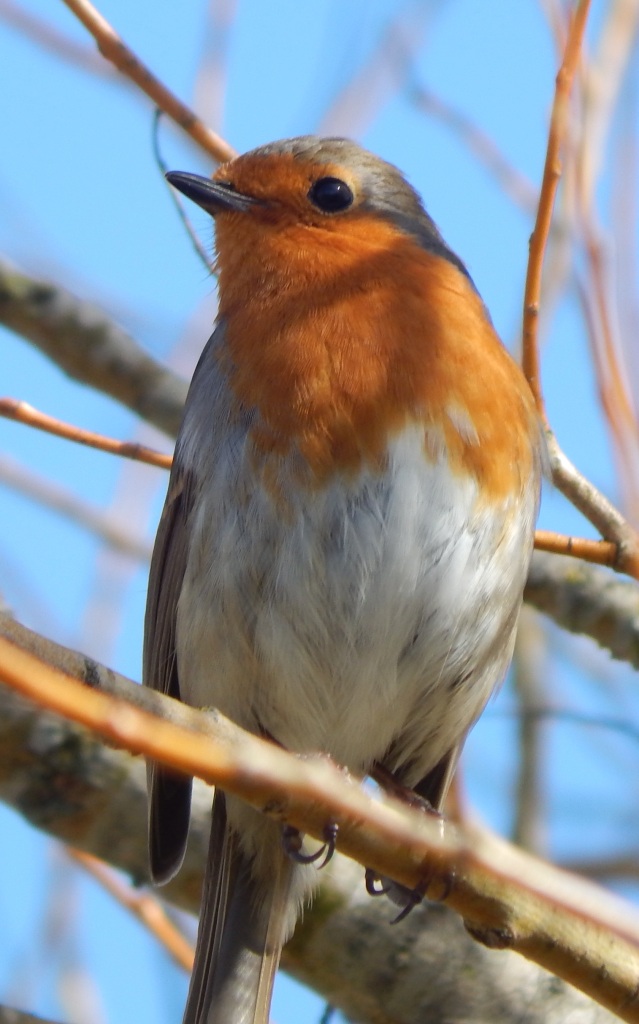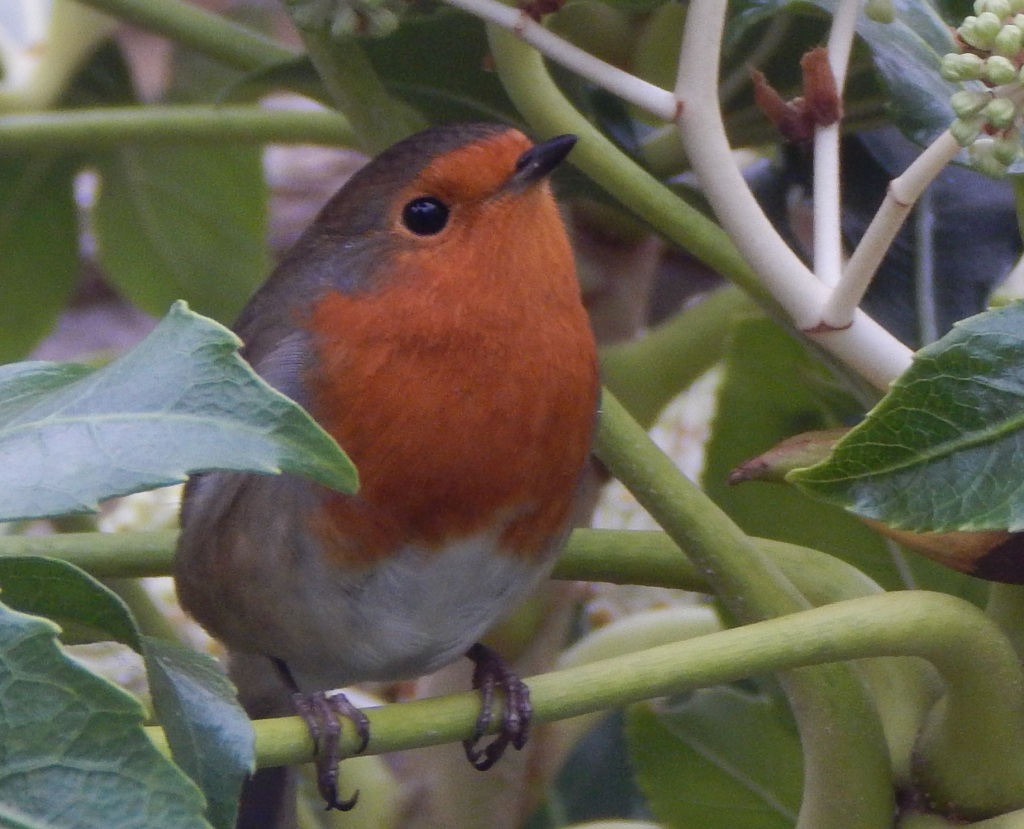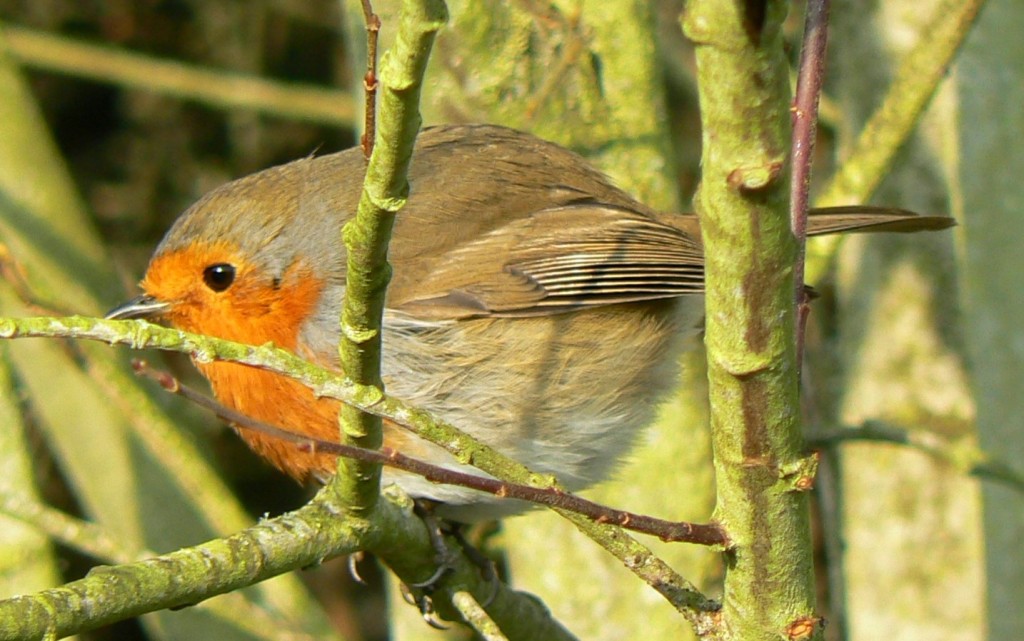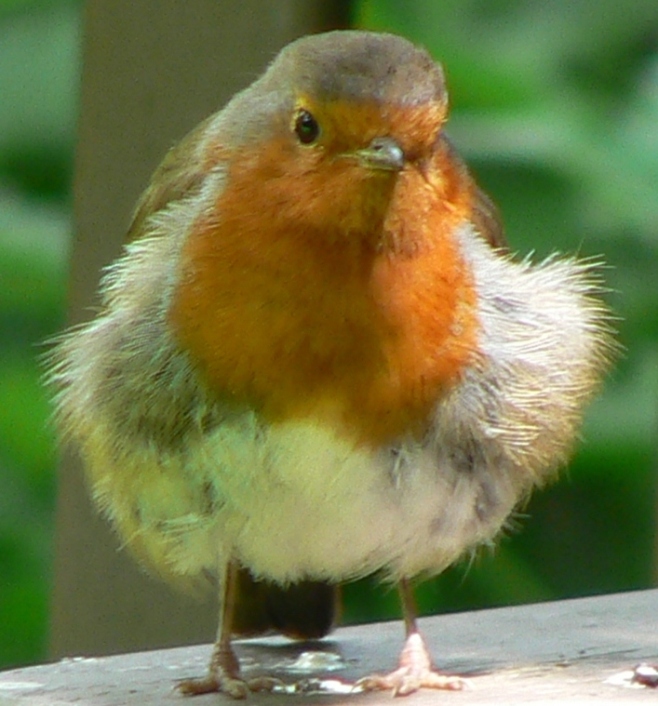
[135] Erithacus rubecula
Introduction
Erithacus rubecula, the Robin, is a familiar garden bird that is relatively tame in Britain but not elsewhere.
It is also known as the European Robin.
It should not be confused with the American Robin or other birds called robins or magpie-robins. There is a tendency to call any bird with similar coloration a robin of some sort.
Taxonomy
Kingdom – Animals
Phylum – Chordates
Class – Aves (Birds)
Order – Passeriformes (Song birds or Perching birds)
Family – Muscicapidae (Old World Flycatchers)
Subfamily – Erithacinae (African Forest Robins) or Saxicolinae (Chats)
Genus – Erithacus
Scientific Name – Erithacus rubecula
Until recently the Robin was a member of the Thrush family, Turdidae. As we have seen often, species are being redefined taxonomically by DNA analysis and the Robin is now no longer a Thrush. Its position is uncertain and could be in a subfamily with some African flycatchers, or in the Chat subfamily.
Name
This bird used to be called just a Redbreast and it was named long ago when the colour red included what we now call orange or orange-brown. Then it was anthropomorphised and given the alliterative name Robin Redbreast, which is still sometimes used.
Erithacus comes from the Ancient Greek name of an unknown bird now assumed to be a Robin. Rubecula from Latin roots means red.
Description
Erithacus rubecula is a small bird with dark brown upperparts and light brown underparts. The face and breast are a bright orange colour.






They usually eat insects and small invertebrates but can eat berries and fruit in the winter – or seeds from birdfeeders.
They are fiercely territorial and will often fight to the death to defend their territories. In the Winter pairs separate and the females also become territorial. (The male stays in the same place and the female finds a nearby territory.) Unlike most birds they continue to sing through the Winter to advertise their presence and both males and females sing.
They are found in woodlands but are very much associated with people.
Young birds have mottled brown breasts.

Habitat and use
Robins are widespread and common over Europe. British birds are usually resident all year.
We associate Robins with Christmas and Christmas cards often show pictures of Robins in the snow. The association started in Victorian times when postmen wore red uniforms, so the Robin Redbreast became associated with the delivery of Christmas cards.

Other Notes
As an island nation, our isolated population of Robins seem very tame. They come very close to people, especially in gardens. This has been said to be because it associates us with Wild Boar, which disturb the soil and release insects for the Robins to eat. On the continent of Europe, where they have been hunted in the past, they are much more wary and difficult to approach.
I often see birdfeeders put out in country locations. They may be visited by several Blue Tits, Great Tits, Chaffinch, Goldfinch, Dunnock and many other species but there will never be two Robins eating what is offered. They will fight to the death first rather than cooperating.
See also
Look out for other garden birds and birds that come to birdfeeders, such as [067] the Goldfinch, that we have met already. I would have said look out for [348] Thrushes (including [347] Blackbirds) but the Robin is no longer a Thrush.
